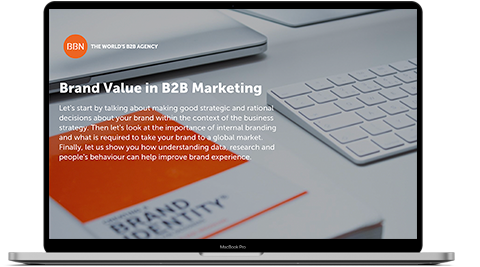“What cannot be measured cannot be managed”
… is the oft-quoted phrase that kicked off a recent discussion on the good, bad and ugly experiences of proving marketing ROI. It’s cited as one of the top challenges of a B2B Marketer, but with the right technical infrastructure (tracking software and system setup), together with the skills to interpret its data, this is a challenge that can be solved.
Marketers that measure ROI are 12x more likely to generate a greater return– meaning just the act of measuring ROI correlates with generating better results.
Peter Drucker (Management consultant and author) said that metrics alone shouldn’t be used to assess success. Drucker’s basic views were that other factors are just as important to success but not necessarily ones that could be measured using ROI, some of these examples are below:
- Following business strategy – if your aim is to talk to more people, this can’t be related directly back to ROI but could be equally as important to your CEO.
- Building a profile – a classic, “we want to improve engagement” – not always measurable, but almost always important!
- Networking – maintaining key relationships, this has nothing to do with ROI and everything to do with the bottom line. It is easier to keep customers than gain new ones and maintaining key relationships is vital to success.
- Raising awareness – print advertising / public relations. Drucker is not a fan of print advertising but admits it can be an important tool for raising awareness. Dependent on the sophistication of the tools you are using this is unlikely to be measurable against ROI but as with other factors, it can be a vital objective.
CRM
Measurement starts with data and determining what data to capture. However, many companies either haven’t invested in CRM packages that give them the infrastructure to capture or if they have, they struggle to interpret the data. Here are a few other issues in play:
- data often bought in, therefore of dubious quality (rubbish in/rubbish out)
- limited training on how to use CRM platforms so data isn’t used effectively
- a systemised CRM without qualitative human training creates greater distance between brands and clients, e.g. a new biz sales call going out to an already established customer
What are we really measuring? Ultimately, it helps us understand what our clients think of us. We’ve heard examples of teams using CRM as a Customer Experience Management tool. This centres the customer at the centre of everything; so all resources are directed at fulfilling customer needs.
Channel selection
Are we selecting the right channels in the first place? Based on data already acquired, are we selecting the best channel to reach our target audiences? Measurement should playback into selecting the right channels going forward, but in reality, is that actually happening? Do marketers really know what to do with the measurement data?
Social media is now becoming a customer feedback-complaint channel that gives a real-time measurement of customer satisfaction. How should businesses respond? A cynical view is: ‘if the pool has urine in it, just add more water’… the idea that when complaints come in push out more content to dilute the effect. Not necessarily a responsible action to take but in these embryonic years of learning how to best leverage social media, it’s pretty commonplace.
Leads vs Relationship
Looking at the marketing mix, there are those activities that generate leads and those that help develop a reputation and nurture relationships. Lead generating activity like marketing automation is usually easier to measure, while disciplines like PR that build on the reputation and help generate relationships are more difficult. PPCs, click-thru’s and other digital enquiries are all easily measurable, but do companies have the systems to handle/track enquiries internally?
When enquiries come in, are staff equipped and trained to respond correctly in order to track the source of the enquiry? The default question seems obvious: “how did you hear of us?” Often the answer is ‘via a web-search”, but do we dig deeper? So next question would be: “what search term do you remember using?” These search terms can subsequently be bought using SEM services. Although they may have searched via the web, the original discovery may have happened earlier (WOM, radio, etc), so be sure to drill a little deeper.
It is almost impossible to measure the success of marketing efforts using a single tool or lone methodology, so an integrated marketing measurement approach is the only way to discover meaningful insights and pointers to future strategies.







